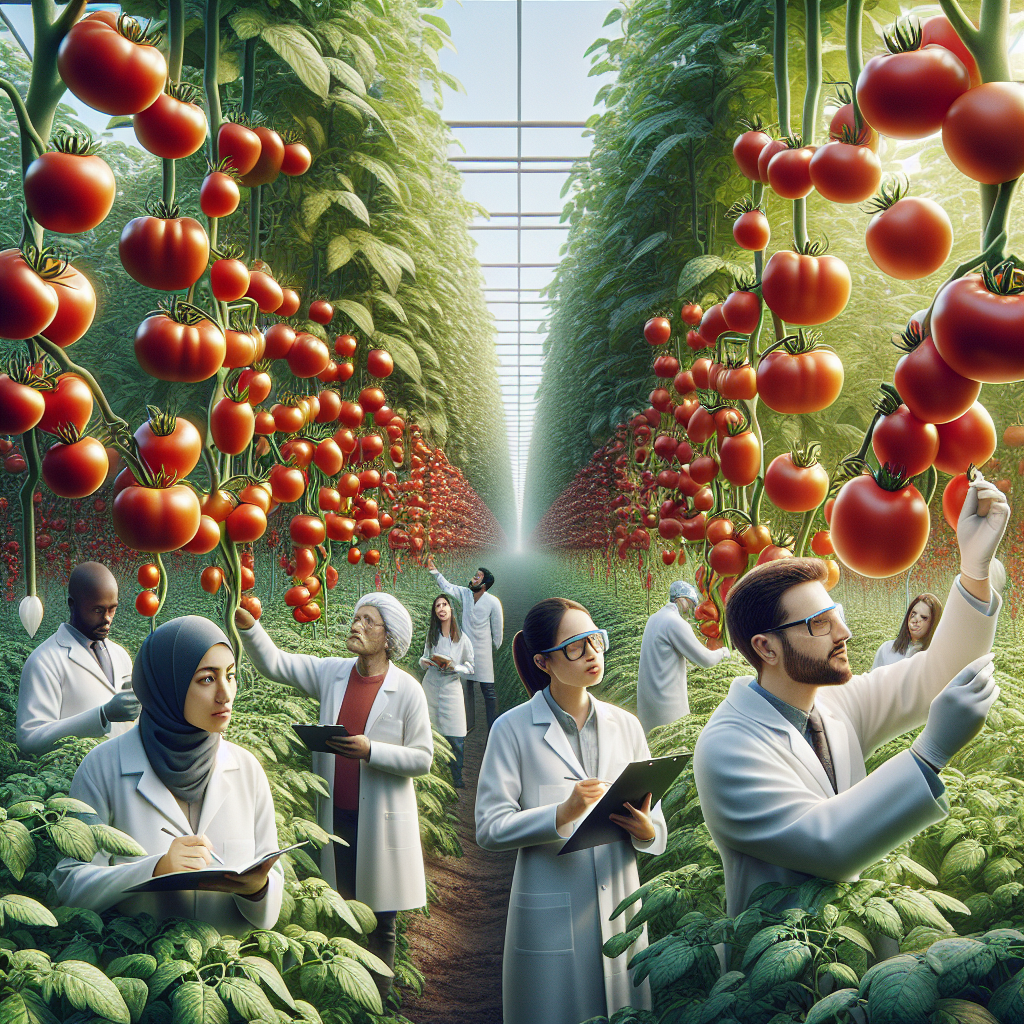
Tomato Science: Unraveling the Genetic Keys to Thriving Under Nitrate Stress
In today’s agricultural landscape, achieving high crop yields often comes at the cost of environmental sustainability. The overuse of nitrogen fertilizers is a prime example, where less than half of the nitrogen applied is effectively absorbed by crops, leaving the rest to leach into soil and water systems, thereby causing environmental degradation. The resulting nitrate stress negatively impacts plant growth by overwhelming cells with reactive oxygen species (ROS), leading to oxidative damage. To combat these challenges, scientists are delving into the molecular mechanisms within plants to discover innovative solutions.
Molecular Discoveries in Tomato Resilience
On July 10, 2024, a groundbreaking study by researchers from Kunming University of Science and Technology, in collaboration with international experts, was published in Horticulture Research. This study investigated how the SlTrxh protein, regulated by the transcription factor SlMYB86, plays a pivotal role in protecting tomatoes from nitrate-induced stress. By enhancing SlTrxh expression, scientists found significant reductions in oxidative damage and strengthened antioxidant enzyme activity, laying a molecular framework for developing stress-resilient crop varieties.
How SlTrxh Enhances Nitrate Stress Tolerance
The research provides comprehensive insights into how tomatoes manage nitrate stress at the cellular level. SlTrxh is activated by SlMYB86, a transcription factor that binds to its promoter region. During nitrate stress, SlTrxh undergoes S-nitrosation, a chemical modification at the crucial cysteine 54 site, boosting its antioxidant properties. This modification also intensifies the interaction between SlTrxh and SlGrx9, another pivotal protein in stress mitigation. Together, these actions maintain lower ROS levels and safeguard against cellular damage.
Experimental Findings and Implications
Transgenic experiments illustrated the robustness of SlTrxh: Tomatoes with overexpressed SlTrxh exhibited strong growth, longer roots, and reduced oxidative stress under nitrate overload, while plants with suppressed SlTrxh expression showed stunted growth, higher ROS levels, and more extensive damage. These results underscore SlTrxh’s essential role in conferring nitrate stress tolerance.
Dr. Huini Xu, who led the research, remarked on the potential transformative impact of these findings: “This study uncovers the intricate molecular pathways plants employ to withstand environmental stresses. By leveraging the regulatory interactions of proteins like SlTrxh and transcription factors such as SlMYB86, we can advance crop engineering efforts to produce plants better adapted to the pressures of modern agriculture.”
Broader Implications for Agriculture
The study’s contributions extend beyond tomatoes. With the global demand for food on the rise, creating crops that can endure environmental stresses is increasingly urgent. By targeting SlTrxh and SlMYB86 through genetic engineering or selective breeding, scientists can shape crops that flourish in challenging environments. This could lead to higher yields, enhanced quality, and reduced reliance on nitrogen fertilizers, promoting a more sustainable agricultural approach. Such advancements have the potential to lessen the environmental impact of nitrate pollution while ensuring food security for an expanding population.
Funding and Collaborative Efforts
This research received funding from the National Natural Science Foundation of China (Grants No. 32260753 and 31760582) and was supported by the Yunnan Ten Thousand Talents Plan: Young & Elite Talents Project. It exemplifies the tremendous progress achievable through collaborative and targeted scientific inquiry.
Journal Information
Horticulture Research, an open-access journal from Nanjing Agricultural University, ranks as the top publication in the Horticulture category of the Journal Citation Reports™ from Clarivate, 2022. It commits to disseminating original research articles, reviews, perspectives, and other scholarly content related to horticultural plants and disciplines, spanning biotechnology, genetics, physiology, and more.
Access the study and additional resources on the Horticulture Research website.
For further inquiries or to connect with the research team, register for media access or download the full study here.
Source: https://www.newswise.com/articles/tomato-science-unraveling-the-genetic-keys-to-thriving-under-nitrate-stress

